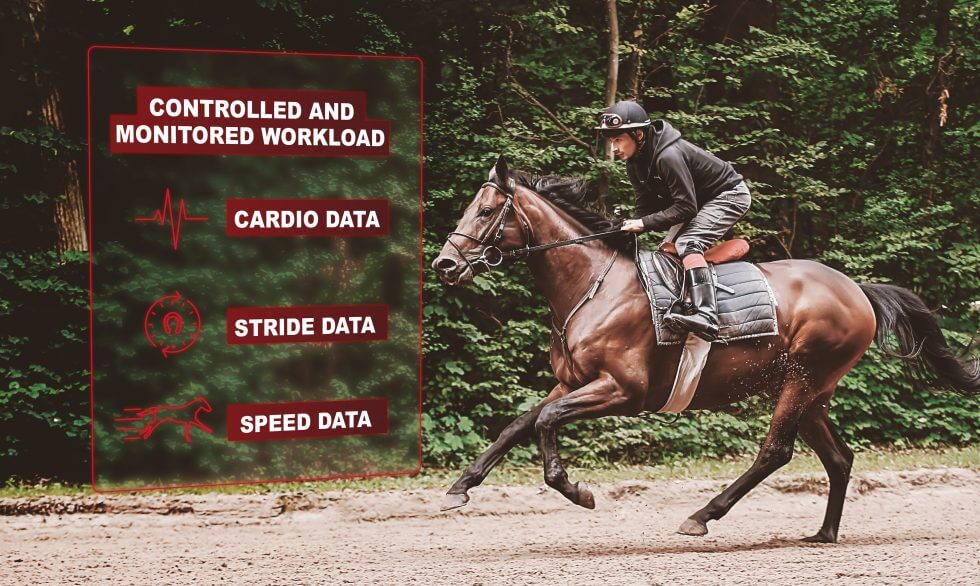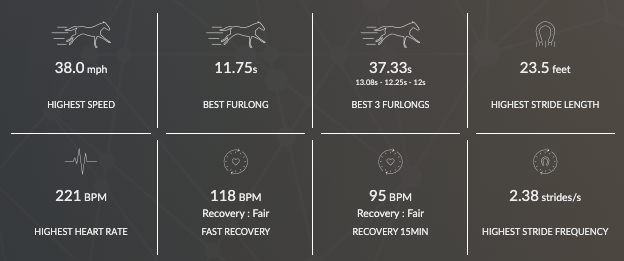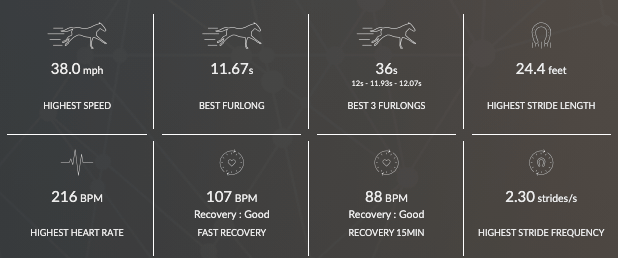At the racetrack, the favorite horse only wins 30% of the time. In our view, this statistic reflects the high degree of uncertainty surrounding the horse racing business. For such a great industry (the racing industry employs thousands of workers and generates significant revenues), this uncertainty is a risk. Racing offers too much randomness, and real upstream work can be done to reduce it. Quantifying the racehorse training workload gives an undeniable competitive advantage. The use of revolutionary new technologies gives the possibility to collect a huge amount of data. Once analyzed, the uncertainty can be reduced.
Why quantify the racehorse training workload?
In an environment as competitive as horse racing, trainers are constantly striving to maximize their chances of winning at the racetrack.
In order for a horse to perform well on race day, he must have undergone a training tailored to his needs. Quantifying training (collecting key data on a horse’s training) is fundamental to his follow-up. Indeed, this quantification allows us to analyze the sessions in order to improve performance throughout the season. The workload assessment – the volume and intensity of a horse’s training over a given period of time – can also be performed. A period of high workload allows the horse to develop his abilities, but it should be balanced with recovery periods. This often delicate balance helps prevent injury and overtraining while maximizing and optimizing progress. The following chart shows the different workload areas where the horse is at risk of injury and where it is actively progressing. Ideally, your racehorses should be in the green zone as often as possible.
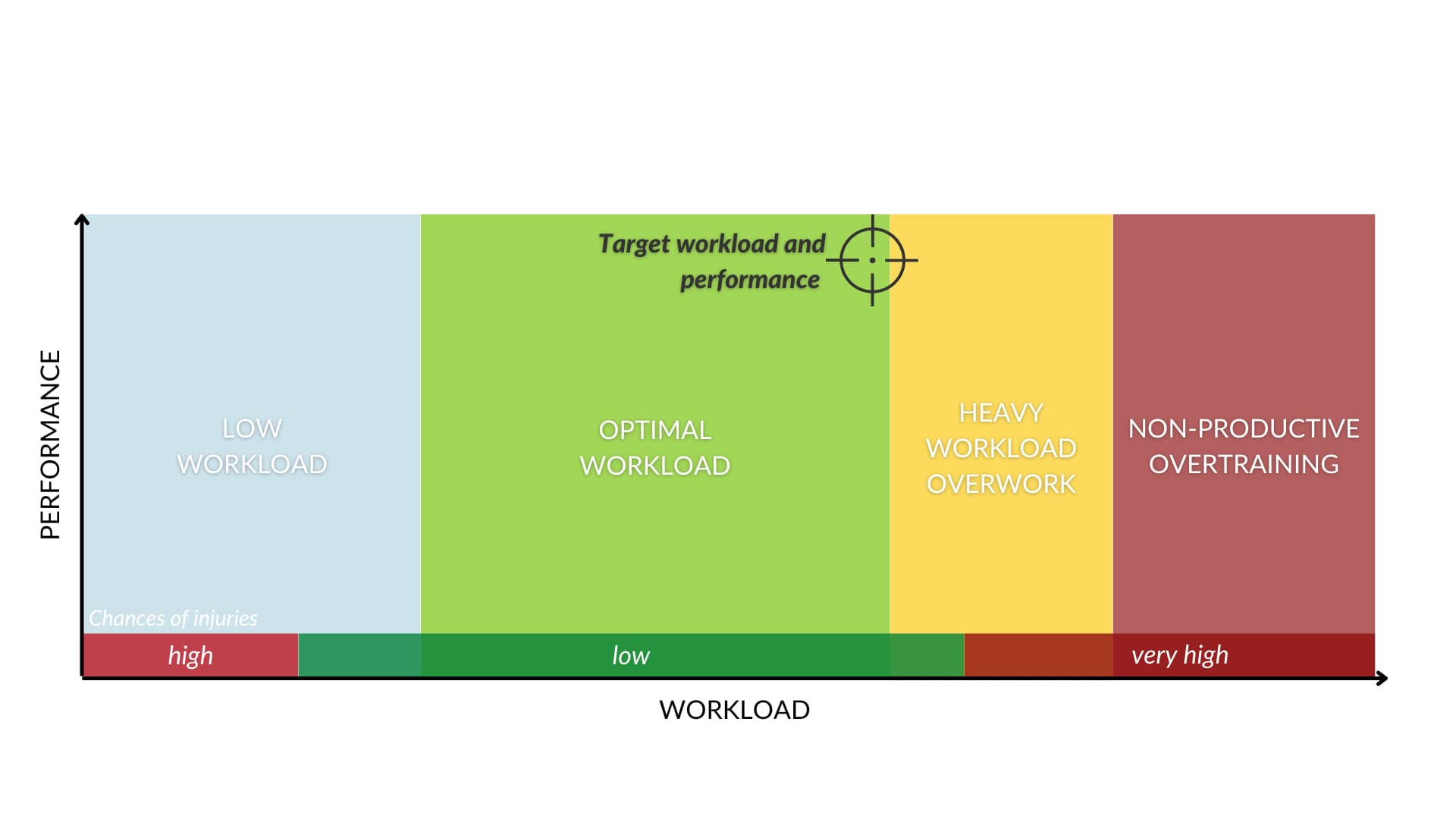
Longitudinal training monitoring, objectivized by the data collection, allows performance optimization. The data and their quantification enable a better understanding and listening of the athlete. Thus, periods of high workload maximize progress, without taking risks thanks to recovery time.
The athlete horse can reach his peak performance on the day of the event, without having endangered his health and well-being. Thus, quantification reduces the uncertainty of a horse’s performance in a race by optimizing his training and preparation. Moreover, quantification allows to anticipate potential fitness loss.
How do you quantify the racehorse training workload?
However, quantifying training (and all the benefits that come with it) is not a simple process. Indeed, in order to do so, you need a sensor to collect key data such as heart rate, speed or locomotion. This data collection allows to highlight the strengths and weaknesses of a horse as well as his current workload. Thanks to these measurements, the trainer is therefore able to make the decision that maximizes the horse’s progress towards his goals, while respecting his limits.
In practice, the quantification of training requires the implementation of an entire process. Each training session must serve a predefined purpose and be compared to past and expected performance. In addition, quantification requires an understanding and analysis of key variables such as maximal frequency or speed achieved (HRMax and VMax) or speed at 200 beats per minute (V200). These parameters are great to compare over time and highlight the progress, or lack thereof, of a horse over the season. In addition, some standardized values (such as V200 and V4) also allow for comparisons between horses. With the help of these measurements, the trainer is able to tell if a horse is at his peak performance or not, and if his fitness level is good. This analysis is a valuable aid when making race entry choices and can avoid a setback or maximize the chances of winning a race.
Concrete example – Quantified improvement during training (EQUIMETRE Data)
By analysing the data from Arion I (anonymised for this article), we can see that the training carried out between the two sessions was successful. Indeed, we can note that this racehorse’s recovery has improved thanks to proper training. The data are comparable as the trainings were similar.
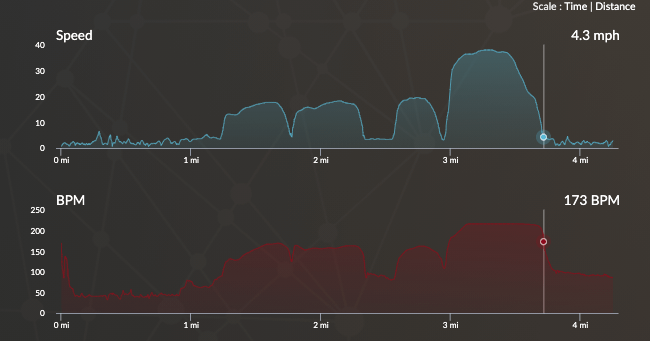
Training of the 04/17/21
Speed = 38 Mph
HR after effort = 118 bpm
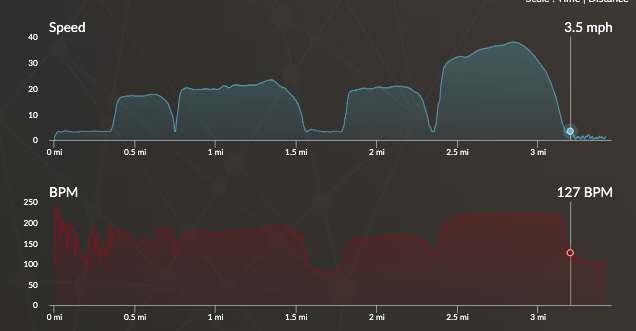
Training of the 04/22/21
Speed = 38 Mph
HR after effort = 107 bpm
What are the limitations of quantifying the racehorse training?
If the quantification of training is not yet democratized in the racing world, it is because it has limitations.
First of all, setting it up requires a significant financial investment. Although it allows to generate a good return on investment, it is still too high for many stables. Whether by impossibility or by choice, this economic barrier hinders the democratization of training quantification. However, time is on the side of data, and the years to come will highlight the results it can achieve.
Moreover, the data collected are good indicators, but they cannot be sufficient in themselves. Indeed, the “human” and “animal” side remains essential and can never be entirely substituted. Data is therefore a help and an objective point of view to be taken into account. It has certainly gained in importance but will not replace the feeling and the informed eye of the trainer and the experts in the field. However, in the long run, our use of data in the horse world will become more important.
Thus, the major limits constraining the development of training quantification are being lifted. Gradually, these limits will be minor and data will become an integral part of the horse racing world.
Conclusion
To sum up, there is a real need to collect data in order to quantify training. The advantages brought by this new practice are decisive in the development of today’s racehorses. Obviously, the movement is well theorized, and its implementation has already proven successful. However, its implementation remains a real financial and organizational investment.
Given the role of data in other professional sports (such as rugby), its advent in the equestrian world is not questioned. As a pioneer in this field, Arioneo facilitates the collection of heart rate, speed and locomotion data from racehorses. EQUIMETRE, our connected sensor is a tool already used by top trainers in their quest for victory on the racetrack and for the well-being of their horses. The technological evolution of the equine industry is already underway!
Key words: racehorse follow-up, quantify the racehorse training workload, racehorse heart rate, racehorse performance, racehorse sensor, equine technology

